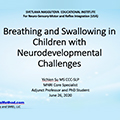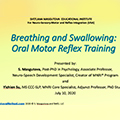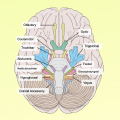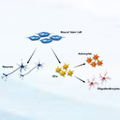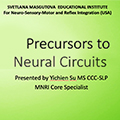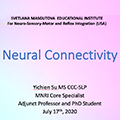
Masgutova Integrative NeuroDevelopmental
Sciences Group
Breathing and Swallowing in children with neurological challenges
- This segment provides knowledge on the aspect of swallowing development and its intimate relationship to respiration for survival and growth. Review of neurophysiological control and essential postural development are also given. Lastly, an outline in use of MNRI reflex integration program to promote and facilitate optimal feeding and breathing in children is presented.
Breathing and Swallowing- Oral Motor Reflex Training
- This presentation will focus on the interdependence of breathing, swallowing, and digestive functions during development. Relevant neuroanatomy and neurophysiology will be presented with consideration to factors influencing breathing and swallowing coordination such as prematurity, tethered oral tissues, and neurological challenges. We will also discuss rationales behind MNRI techniques for oral motor reflexes to facilitate neurodevelopment.
MNRI for eating development in children
-
Successful eating skills are essential for survival and growth. Children with eating challenges often exhibit additional behavioral characteristics indicating suboptimal functions of the nervous system. This presentation proposes the relationship between primary reflexes and developmental milestones in eating skills. An overview of eating mechanisms and neurodevelopmental progression is included to link concepts and rationales behind MNRI approaches for eating development.
Cranial Nerves for Eating and Breathing
-
This presentation covers overview in neurophysiological development of the face and tongue. Particular emphasis is given to the formation of pharyngeal arches with designated cranial nerves, muscles, and bones/cartilages. A couple of primary reflexes addressed by MNRI techniques to activate and regulate breathing and eating reflexes are discussed.
Tongue Ties and MNRI® Oral Motor Reflex Training- Part 1
-
Tongue tie is a type of tethered oral tissues and can limit mobility of the tongue for eating and speech development. Other tethered oral tissues include lip and buccal ties. Restrictions of oral motor movements present specific challenges, causing ineffective development of sensory-motor neural circuits for learning and advancing in oral motor skills. MNRI® Oral Motor Reflex Training aims to provide optimal sensory input to initiate effective oral motor learning.
Stem Cell Treatment: Concepts and Practices- positive outcomes and limitations
- This presentation includes currently known immune deficiencies in children with neurological challenges, Cerebral Palsy and Autism. Review of current literatures on proposed therapeutic pathways and clinical efficacy of Stem Cell transplant is provided.
From Stem Cells to Neurons
- This segment provides a fundamental description of neuronal development from embryology to maturation. Internal and external factors guiding and facilitating neuronal growth are discussed in some details with particular emphasis on neuronal growth and connection regulation.
Precursors to Neural Circuits
- This presentation discusses basic units of neural circuits via synaptic formation. Types of synapse, fundamental circuits such as reflexes and central pattern generator, are included. Structural and functional neural connectivity are briefly outlined.
Neural Connectivity
- We will present neurophysiological definition and description of the basic units for brain neural connectivity as the focus of MNRI Reflex Integration program for neurodevelopment. Growth and organization of neural links, such as synaptic formation, essential types of neural circuit patterns and essential functions for neuroplasticity will be included. An outline on current methods in studying brain connectivity including those used in MNRI studies will be briefly discussed.

